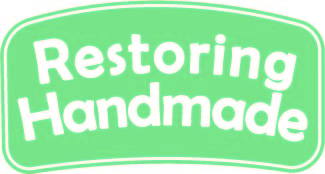DIY Mitered Corner Planter Box
Are you ready to make an easy and elegant piece of décor for your home? I first made this mason jar planter box last Christmas to give as gifts to my family. It’s always so nerve-wracking to give people homemade gifts, but they loved them! *Cue exhale*
I love that these planter boxes are so versatile! First of all, you can make them any color you’d like. I personally love the natural wood colors, but feel free to paint them as well! Secondly, you can have fun picking out any kind of handles! Just make sure that they fit your piece, which is 3″ hole spacing. Thirdly, you can place them on a windowsill with some fresh flowers, on your table as a centerpiece, on your mantel, on your bookshelf…should I keep going? You get the idea.

One of my favorite features about these mason jar planter boxes is the mitered corners. I really feel like this simple step in the building process creates a more put-together and clean look. If you have never made a miter cut, never fear! It is a lot easier than it looks, and guess what? This was the first time I had ever made a mitered box! I was very excited about it, because I knew that I wanted to bring this skill to many other future projects.
Enjoy the free plans below, and don’t forget to let me know if you use these plans to make your own mason jar planter box. I would love to see them!
*This post contains affiliate links at no extra cost to you. View my full disclosure here.
What you’ll need:
- Materials:
- (1) 1 x 4 x 6’ select pine board
- Brad nails (1.25″)
- Wood glue
- Finishing materials:
- Sandpaper
- Stain/Paint
- Handles with 3″ hole separation (and screws if yours don’t come with any)- mine are from Hobby Lobby
- (5) pint sizes mason jars
- Tools:
- Saw of choice- I used my miter saw, but you can also use a hand saw and miter box, circular saw, or table saw.
- Nail Gun
- Orbital Sander
- Cut List:
- (2) 1 x 4 x 17 ½” (long sides)
- (2) 1 x 4 x 5” (short sides)
- (1) 1 x 4 x 16” (base)
Instructions:
Step 1: Cut your wood
- Using the cut list above, cut your 1×4 to the lengths listed.
Step 2: Miter your corners
- You will be cutting the corners on the 17 ½” pieces, and the 5” pieces. If you’re using a miter saw like me, you can do this a couple of different ways. My saw is a compound miter saw, so I can tilt it to get a beveled cut, or I can swivel the base to get the angle I need. I stood my wood up and swiveled the base of my saw. See pictures
- You want to keep the length of each piece. The longest parts of your corners will be on the outside of the box, so you need make sure that each piece has two angled cuts “inwards.” Make sure you double check that you are cutting the corners the correct way before you cut them.
Step 3: Assemble the box
- Start by attaching a corner with wood glue and brad nails in your nail gun. You will be putting a 17 ½” piece with a 5” piece. Try to keep everything flush and square while you’re doing this! I put 2-3 nails in each corner.
- You can then finish attaching the rest of the box. I did this by attaching the other 17 ½” piece to the open corner on the already attached 5” piece, and then attached the other 5” piece.
- Place your box flat on your table, and your 16” piece should fit right in the opening! Don’t feel bad if you have to trim it a little bit- it happens to the best of us 😉 . Attach it with wood glue and a few nails in each side.

Step 4: Sand and stain
- If you choose to use select pine like I did, you won’t need to do any hardcore sanding. I just did a light pass around with 220 grit sandpaper on my orbital sander.
- Clean off your piece to prep for staining/painting.
- For the darker box, I used one coat of Minwax’s Early American stain. For the lighter box I used one coat of Minwax’s Golden Oak stain.
Step 5: Hardware
- Once the stain has had plenty of time to dry, go ahead and attach your handles! I bought mine at Hobby Lobby, and spray painted the screws black to match. If you need to buy screws for your handles, just make sure that they are short and won’t poke through. I used ½” wood screws for this.
Step 6: Finish with poly!
1. This can be optional, but if you want to add a layer of protection on your planter box, I would suggest a layer or two of polyurethane. I usually prefer water based polyurethane like this one because it dries clearer and doesn’t yellow the lighter colored wood.



-Whitney
You can also find Restoring Handmade on Facebook, Instagram, and Pinterest!
Other projects you might like!
Subscribe here to get the latest news.
I solemnly swear to never spam you.



